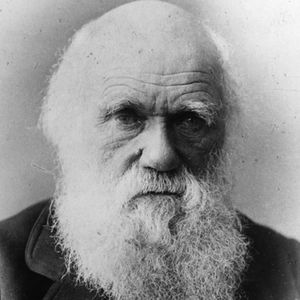Charles Darwin: A pioneer of rock?
Charles Darwin – pioneer of rock?
Following our recent feature about Shrewsbury’s most famous son who changed perceptions of mankind’s place in the world with his theory of evolution, Dr Ken Addison of Broseley has come forward to highlight another revolutionary aspect of his work.
Dr Addison says it is much less well known that the greater part of Charles Darwin’s published scientific work was as a geologist and glaciologist.
“He later recalled that before he was nine, he had formed a ‘strong taste for collecting pebbles and minerals’ alongside his study of newts in Shrewsbury Quarry,” he said.
“Graduating with Cambridge University’s multi-disciplinary degree in 1831, he came under the tutelage of Adam Sedgwick, a leading pioneer in the new science of geology, and Darwin joined him on fieldwork in Snowdonia in June that year.
“In Cwm Idwal, a well-known location for Shropshire visitors, they were studying ‘greenstones’ which we now recognise as fine-grained volcanic ash and in August he attempted to map the geology of Shropshire.”
After taking part in the five-year voyage of HMS Beagle, Darwin revisited Cwm Idwal and the adjacent Nant Ffrancon in 1842, this time armed additionally with his experience of glaciers and icebergs around Tierra del Fuego and the Andes.

“Darwin’s visits to Snowdonia bracketed the emergence of what we call the Glacial Theory by Swiss and Austrian geologists, translating into the British Isles.
“Having read some of the articles which began to appear, Darwin then applied what he’d seen of South American glaciers to Wales and at the same time effectively entered the dispute over whether or not there had been a great, biblical ‘Noah’s Flood’. Other geologists at the time postulated that any evidence of ice movement in Britain must have been created by icebergs, but although he had seen what we now call tidewater glaciers emptying into the sea, where they floated and spawned icebergs, Darwin accepted the principle that the former glaciers in Cwm Idwal and Nant Ffrancon were land-based. This was quite revolutionary at the time.
“He realised the large mounds, smoothed rock surfaces and scattered boulders which he and Sedgwick found around Llyn Idwal were in fact moraines and ice-abraded rocks from the last glaciers. He described this ‘eureka’ moment in his 1842 article ‘Notes on the effects produced by the ancient glaciers of Caernarvonshire, and on boulders transported by floating ice,’ and thereby became a pioneer of the emerging science of glaciology.”
Dr Addison is an Emeritus Fellow in Earth and Climate Systems Science at St Peter’s College, Oxford University.
“As an Earth Scientist, I naturally embraced Darwin’s pioneer work in the 19th century and became aware that the greater part of his published research was in the Earth Sciences.”





